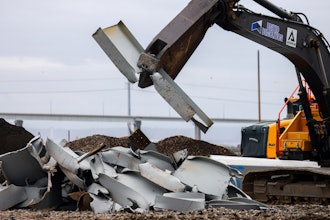At IEN, our mission is offer as many “firsts” to our audience as possible. This means finding and sharing the latest news, product innovations and landscape-shifting technologies.
But sometimes in order to appreciate the scope of our current coverage, it can be interesting to look back at their origins.
For example, we’ve talked a lot about automotive recalls lately – from Takata airbags to GM ignition switches to VW emissions ratings. Did you know that the first official government recalls weren’t issued by the National Highway Traffic Safety Administration until the early 1970s? And the earliest model targeted, ironically enough, was 1949 Volkswagens with a defective windshield wiper arm locking screw that could detach and impair driver visibility.
CRF Frozen Foods is currently in the midst of one of the largest frozen food recalls in history. The government didn’t get involved in regulating food quality until Congress passed the Pure Food and Drug Act of 1906, which led to the eventual creation of the FDA. The first major national food recall – it occurred in 1920 when an outbreak of botulism was linked to improperly canned olives.
In terms of technology, nothing seemingly generates more buzz or interest than 3D printing. While we generally associate the technology’s origins with Charles Hull and 3D Systems’ development of stereolithography in the mid-1980s, its true origins go back to the 1860s.
French artist François Willème was producing sculptures of people with a method he described as photosculpture. Willème didn’t have access to CAD software, so he would arrange his subject on a circular platform, surrounded by 24 cameras spaced out at 15-degree intervals. He would then simultaneously photograph their silhouette from each camera. This photographic set of profiles contained the data for a complete representation of his subject in three dimensions.
Another topic that’s always of interest is workplace safety, and more specifically, who’s not being so safe. You probably knew that OSHA was established in 1971, but what you might not have known is that the first fine issued to a manufacturer was for $100 to Kansas tractor cabin producer Meade Manufacturing. The fine was for a lack of machine guards on woodworking equipment.






















